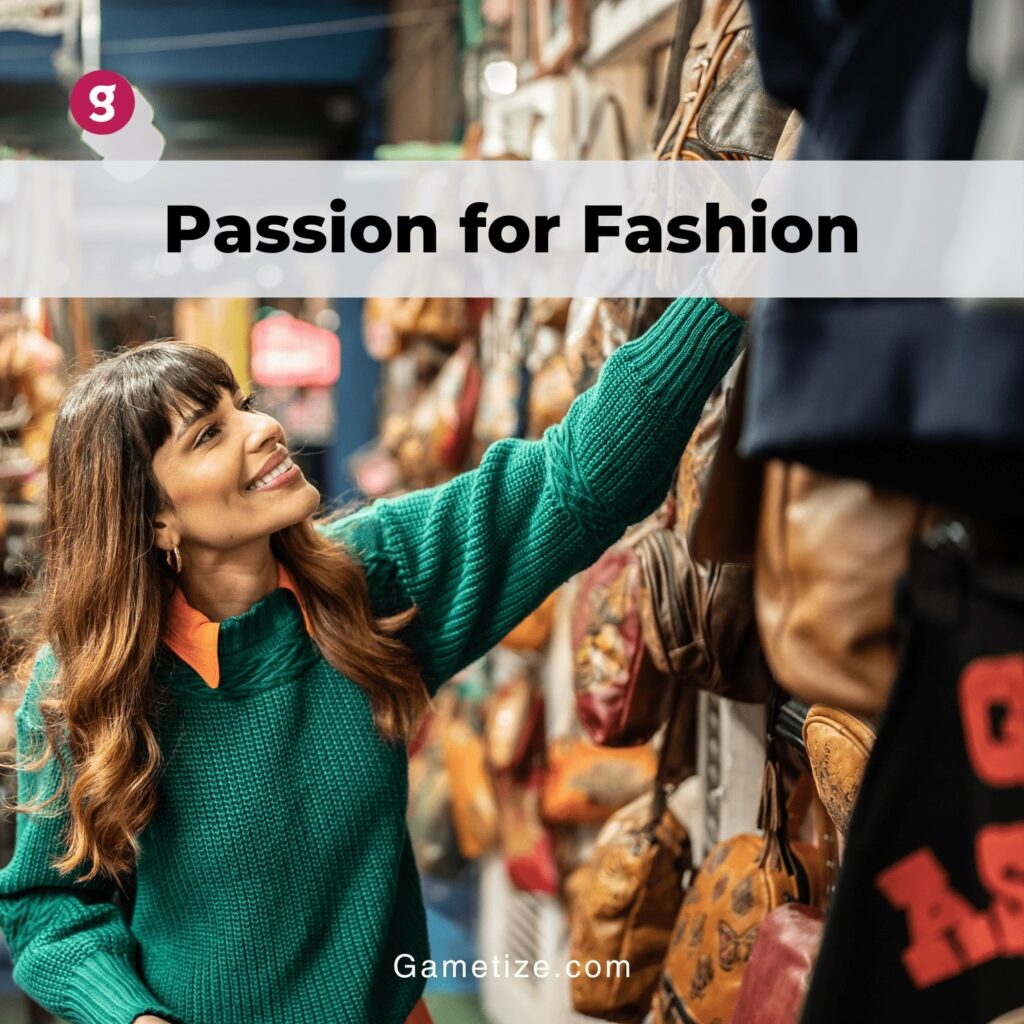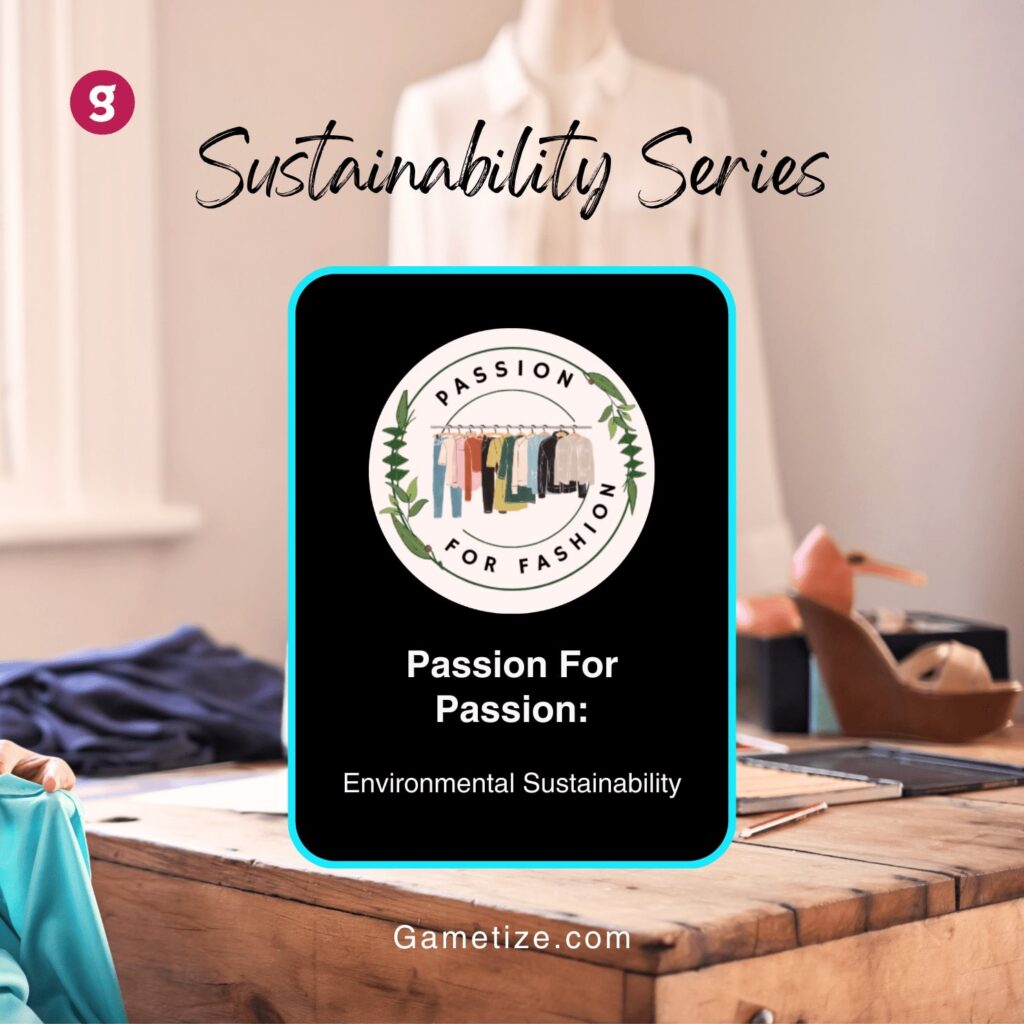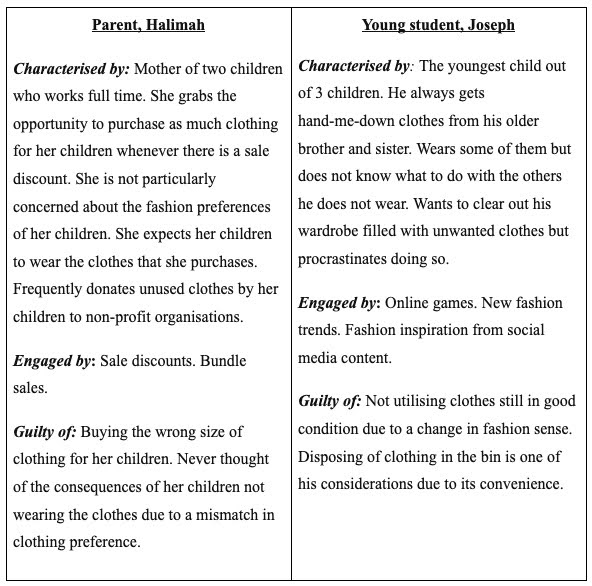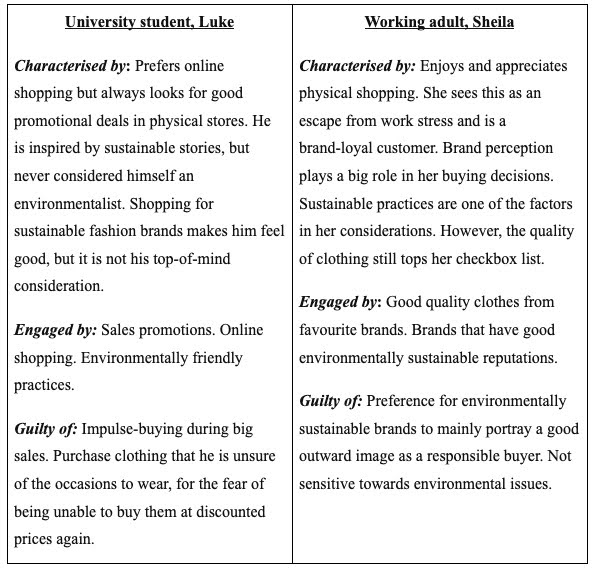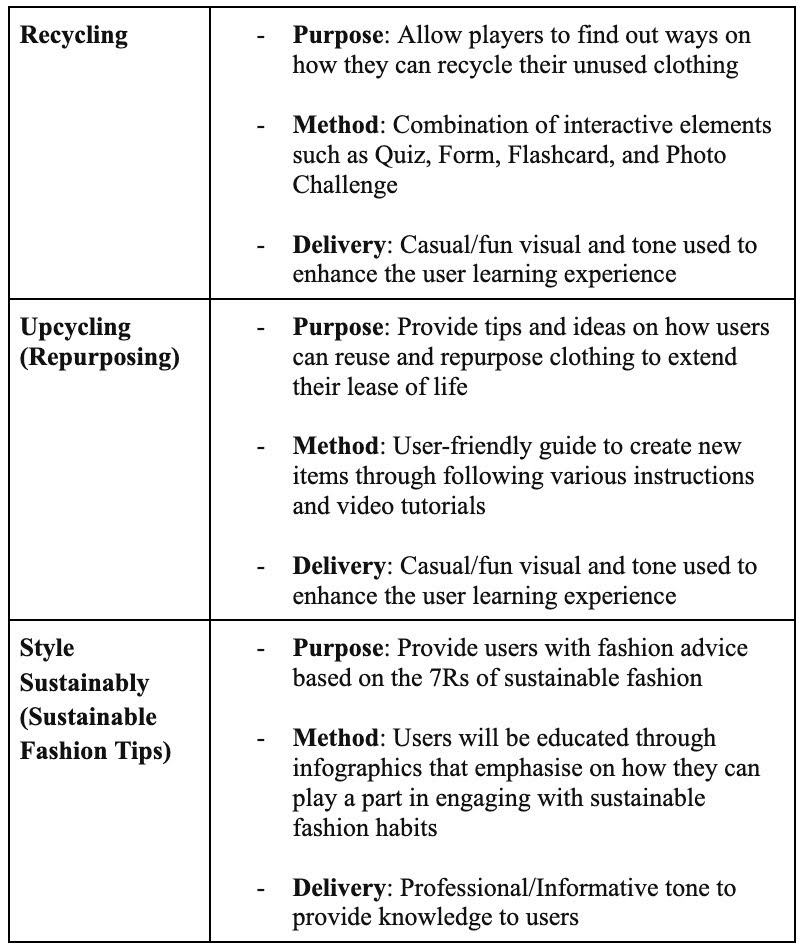1. 6D Playbook
Defining the Problem
Problem Statement: The prevalent culture of fast fashion engenders overconsumption, resulting in environmental issues and wasteful practices, thus highlighting the urgency of fostering habits and mindset centred around environmental sustainability.
Background: The National Environment Agency reported that fashion and textile products accounted for 137 tonnes of waste – of which only 4% have been recycled. The issue is further exacerbated by the prevalence of fast fashion, where clothes are produced rapidly in the market to capitalise on current trends. In 2022, a Strait Times article revealed that fashion products in Singapore accounted for 39% of the country’s greenhouse gas emissions. Therefore, the low commitment of consumers to practice sustainable habits amidst the pervasiveness of fast fashion – where clothes are discarded as quickly as they are produced – highlights a growing need to address this consumer-level issue.
Determining Goals
Our group aims to catalyse Singaporeans’ journey in reinforcing current sustainable habits and to educate new habits to encourage a more sustainable lifestyle.
Our group aims to achieve at least 24 participants to interact with our game and obtain a 50% increase in overall awareness of sustainable consumption and recycling habits, which will be measured via the pre and post-game surveys.
Deciding Target Behaviours and Emotions
Real World
- Users grow in sensitivity towards environmental issues regarding fast fashion.
- Users become aware that practising sustainable habits is not effort-intensive.
- Users learn that sustainable practices can be enjoyable too, not simply mundane.
- Users consider environmental sustainability in their purchase decisions.
In Game
- Users engage with their loved ones while participating in the upcycling segment.
- Users influence one another to make their lifestyles more sustainable.
- Users share their game-learned knowledge and inspire collective sustainability journeys.
Target Emotions
- I never realised that being eco-friendly could feel this rewarding.
- I am a part of a community that values and promotes sustainable fashion.
- I am now clear with my priorities in purchasing.
- I never thought this new skill would be so helpful.
- This is an excellent way to discover or explore new hobbies.
Designing the Mechanics and Process
The game starts with a pre-survey to gather user data and information about user demographics and clothing consumption habits – to measure the game’s success. Once the pre-game survey is completed, all categories in the game will be unlocked, and players can choose any category without a specific order. Once all categories are completed, users must complete a post-game survey to demonstrate enhanced understanding and consideration of the topics. Completing all categories and post-game surveys earns users four badges, which can be redeemed for a physical voucher from a sustainable partner.
Diagnosing and Analyzing the Content
Step 1: Walkthrough the 6D Playbook again
The content provided in this article fulfills all the requirements below:
- Problem and Objective Identification: The issue of overconsumption in fast fashion is identified, and our game aims to reinforce sustainable behaviors and educate undesirable behaviors to minimize the environmental impact of the fast fashion industry.
- Goals: We will have 24 individuals try the game and measure its success through pre and post-game surveys.
- Target Behaviours: Our game raises awareness of the environmental impact caused by fast fashion and encourages the adoption of sustainable habits through our content.
- Players’ Profiles: We have created four realistic player profiles that reflect their different attitude towards shopping and clothing preferences – which are both desirable and undesirable.
Step 2: Game Structures and Elements
- Are there any “wow factors” or surprise discovery of rewards in place? 7/10
- How focused are the games? 8/10
Step 3: Challenges
- How easy is the onboarding (very first) challenge to complete? 10/10
- How appealing are the challenges to the described players? 8/10
- Will there be fresh challenges rolled out? If so, is the schedule well-designed? 7/10
- Are the challenges relevant to the objectives/goals/problem (i.e., not random)? 6/10
- Are the challenges easy to understand? 10/10
- Is there a good number of challenges? (i.e., not too little or too much) 8/10
Step 4: Feedback and Completion
- How clear and frequent is the feedback? 8/10
- Is the feedback relevant to the objective/goals? 9/10
3. Addressing a real world challenge
Statistics from the UN Environment Programme reveal that the fashion industry accounts for 2-8% of global carbon emissions, largely due to the rapid disposability where clothing is often discarded after a single use. CNA reports that Singaporeans, on average, purchase 34 pieces of clothing annually, discarding 27 of them by the year’s end. This behaviour underscores a pervasive trend: consumers favour fast fashion’s short-term benefits, like cost savings and convenience, over sustainable choices’s long term advantages. A significant aspect of this issue is the lack of public awareness about the environmental ramifications of impulsive fast fashion decisions. For instance, many buy ill-fitting items driven by short-term desires, only to let them languish unused in their closets. Recognizing this, our team aims to highlight the urgency of sustainable fashion choices through our game, inspiring consumers to manage unwanted clothing responsibly while staying stylish.
4. Learnings and reflection on the project and the issue/cause
With the help of Gametize, we familiarised ourselves with the platform and were capable of designing games that enhanced the user’s learning despite challenges along the way. Moreover, regular feedback and support from Gametize allowed us to understand our project’s weak points.
This journey went beyond game creation; it deepened our understanding of fast fashion’s environmental and societal impacts. We ventured into exploring practical solutions, like repurposing items, which expanded awareness and resonated with our target audience. Emboldened by the insights and impact of this project, we are more committed than ever to promoting sustainable fashion choices and inspiring others to do the same.
1. Play the game first.
2. Use the Template game for your own initiatives.
Credits: [AY2023/24] G3 Team 5 – Chloe Lee Xing Ru, Darren Tan Guan Seng, Fion Mak Jia Xin, Muhammad Hafiz Bin Amir, Natalia Beatrice Que Dy, Sriya Nannapaneni, Tan Ern Hwee Luke, Tan Liwen

